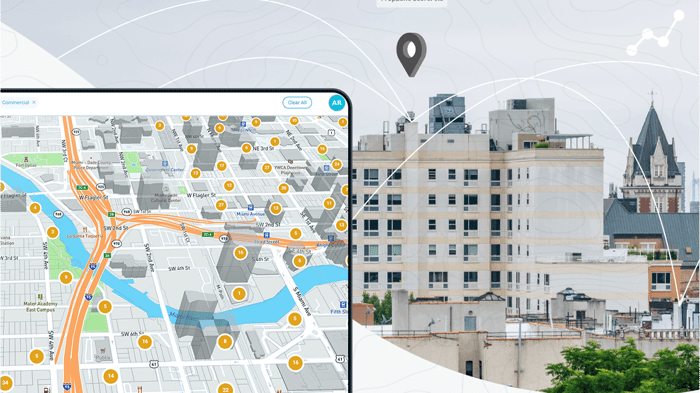In the landscape of urban development and real estate, the ability to visualize and understand complex zoning and land use data is invaluable. Gridics maps offer an unparalleled tool for professionals and stakeholders across various sectors. This guide is designed to navigate you through the intricacies of printing Gridics maps, a process essential for bringing digital data into the tangible realm for analysis, presentations, and strategic planning.
What are Gridics Maps?
Gridics maps represent a cutting-edge technological solution designed to transform the way cities manage zoning and urban planning. These maps utilize advanced geospatial technology to deliver deep parcel-level zoning data and intelligence. This technology enables the visualization of a city's zoning ordinance in a manner that is easily interpretable and understandable, not just for government officials but also for the public, developers, and urban planners.
Gridics maps integrate various data layers, including GIS shapes, public property data, and transit data, allowing for the analysis of zoning information and the potential for development within specific parcels in real-time 3D. This integration provides a comprehensive view of development potentials, zoning restrictions, and urban planning considerations.

How to Print Gridics Maps
Printing Gridics maps involves a series of steps designed to ensure the maps are accurately represented and useful for their intended purpose.
-
Create and Customize Your Gridics Map: Start by opening your GIS software and loading the necessary geographic data, which might include zoning information, land use data, or other relevant layers. Then, define grid parameters that suit your analysis needs and customize the map's appearance, including colors, labels, and legends, to make the information clear and effective.
-
Export the Gridics Map File: Choose the export option in your GIS software and select a file format that is suitable for printing, such as PDF or a high-resolution image format. Adjust the export settings to ensure the file maintains high clarity when printed, then save the file to an easily accessible location.
-
Open the Exported File for Printing: Locate the exported file on your computer and open it using a viewer that confirms it is ready for printing.
-
Print the Gridics Map: Access the print settings in your preferred viewing software and set your printing preferences, including paper size, orientation, and quality, to match your intended output. Consider printing a test page to ensure the colors, labels, and details appear as desired. After loading the paper into your printer, initiate the printing process and monitor the job for any issues.
-
Review the Printed Gridics Maps: After printing, inspect the prints for accuracy, clarity, and color quality. If you identify any issues, make the necessary adjustments in your GIS software and repeat the printing process.
Tips for Success:
- Use high-resolution export settings to ensure clear prints.
- Adjust the map size to fit your paper dimensions while keeping labels and details legible.
- Experiment with different paper types to enhance the map's presentation.
- Ensure your printer is compatible with the chosen file format and can handle the map's size and resolution.
- Maintain consistency in color schemes, fonts, and legends for a cohesive appearance.
Who Might Want to Print Gridics Maps
Printing Gridics maps can be valuable for a broad range of users and stakeholders involved in urban planning, real estate development, government policymaking, and community engagement. Here's a breakdown of who may want to print these maps and why:
-
Urban Planners and Architects: These professionals rely on detailed maps for planning and designing urban developments, infrastructure projects, and assessing the impact of potential developments on existing urban layouts. Printed Gridics maps can provide a tangible way to analyze zoning laws, land use, and development potential in meetings, presentations, or as part of the planning and review process.
-
Real Estate Developers and Investors: For those involved in property development and investment, printed Gridics maps offer invaluable insights into zoning regulations, land use restrictions, and development potentials of specific parcels. This information is crucial for feasibility studies, investment analysis, and pitching projects to stakeholders or potential investors.
-
Local Government Officials and Municipalities: Government entities responsible for zoning, urban planning, and development approvals can use printed Gridics maps for internal reviews, public meetings, and community consultations. These maps help in making informed decisions regarding land use policies, zoning changes, and urban development strategies.
-
Community Groups and Non-Profit Organizations: Engaged in local development projects, advocacy, or community planning efforts, these groups can utilize printed Gridics maps to better understand and communicate how proposed developments or zoning changes might impact their communities. These maps can be used in community meetings, workshops, or as part of public awareness campaigns.
-
Legal Professionals Specializing in Real Estate: Attorneys and legal professionals dealing with land use disputes, zoning appeals, and real estate transactions might print Gridics maps to support case research, legal arguments, or in mediation and court presentations.
-
Educational Institutions and Researchers: Academics and students in urban planning, geography, and related fields may print Gridics maps for classroom instruction, research projects, or academic presentations to analyze and discuss urban development patterns, zoning impacts, and land use planning principles.
-
Environmental Consultants and Analysts: These professionals may use printed Gridics maps to assess the environmental impact of proposed developments, including considerations for green spaces, biodiversity, and sustainable land use planning.
Consider printing on cardstock for added durability.
Final Thoughts
Printing Gridics maps is essential for various stakeholders involved in urban planning, real estate development, and community projects. These maps serve as valuable tools for presentations, documentation, and reference, providing a tangible way to analyze and share geographic data organized into a grid structure. When printing Gridics maps, it is crucial to maintain consistency in color schemes, fonts, and legends to ensure a professional and cohesive appearance.
GIS software such as ArcGIS, QGIS, and specialized planning tools can be used to create and customize these maps. It's possible to adjust the size, colors, and details of the maps to fit specific needs before printing, ensuring the final output is clear, accurate, and visually appealing. High-resolution exports and careful selection of paper types are recommended for optimal print quality. For intricate maps, using higher mesh counts during export can help retain fine details.






